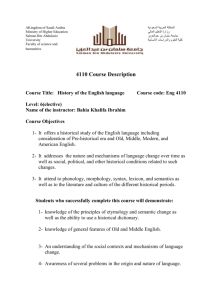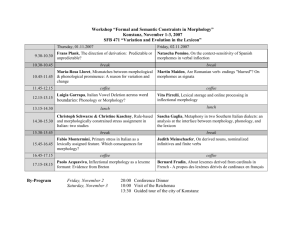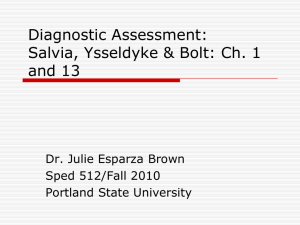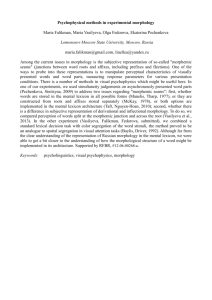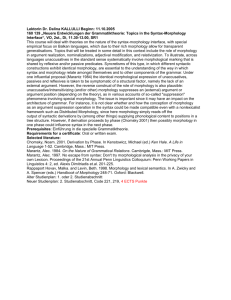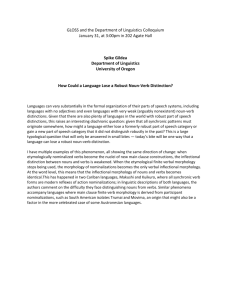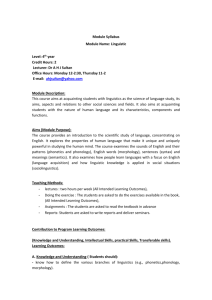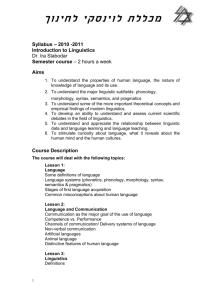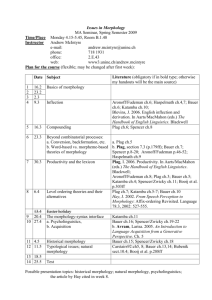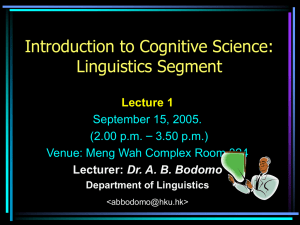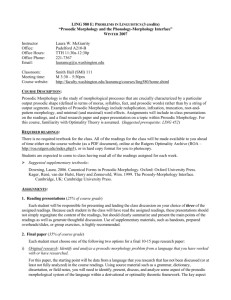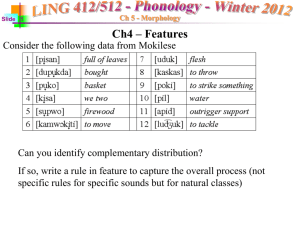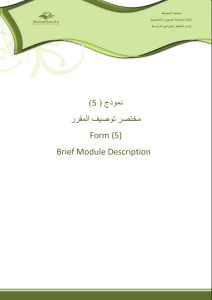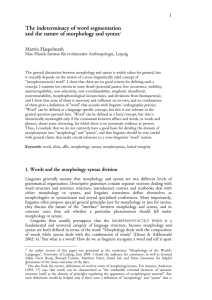eprint_1_16402_1077
advertisement
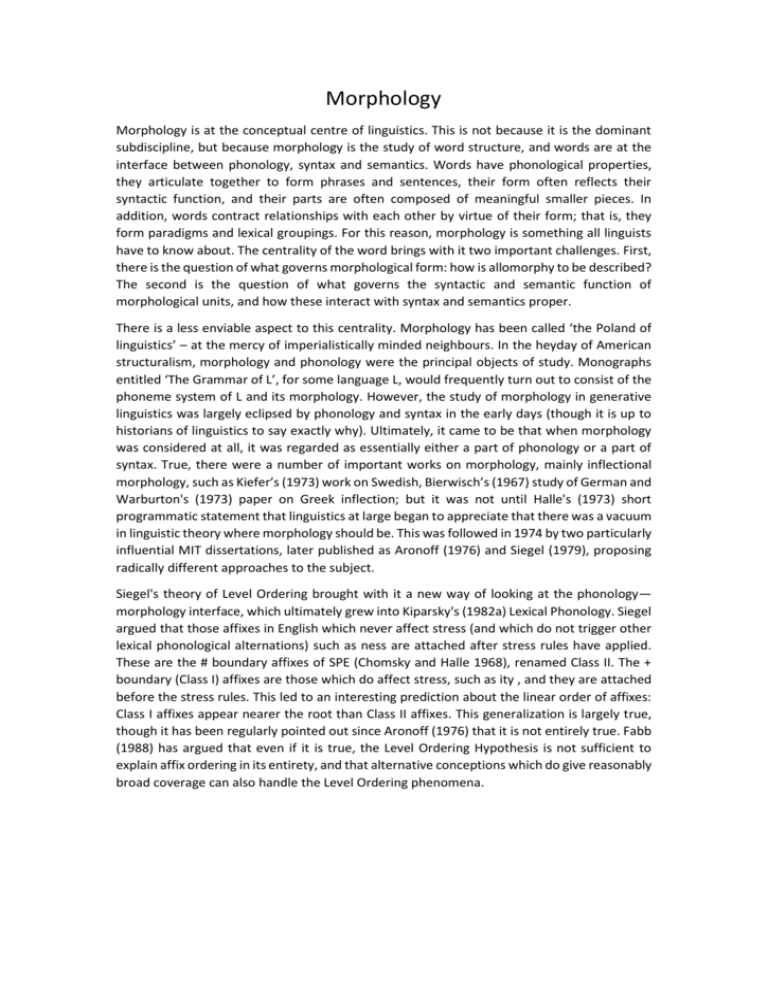
Morphology Morphology is at the conceptual centre of linguistics. This is not because it is the dominant subdiscipline, but because morphology is the study of word structure, and words are at the interface between phonology, syntax and semantics. Words have phonological properties, they articulate together to form phrases and sentences, their form often reflects their syntactic function, and their parts are often composed of meaningful smaller pieces. In addition, words contract relationships with each other by virtue of their form; that is, they form paradigms and lexical groupings. For this reason, morphology is something all linguists have to know about. The centrality of the word brings with it two important challenges. First, there is the question of what governs morphological form: how is allomorphy to be described? The second is the question of what governs the syntactic and semantic function of morphological units, and how these interact with syntax and semantics proper. There is a less enviable aspect to this centrality. Morphology has been called ‘the Poland of linguistics’ – at the mercy of imperialistically minded neighbours. In the heyday of American structuralism, morphology and phonology were the principal objects of study. Monographs entitled ‘The Grammar of L’, for some language L, would frequently turn out to consist of the phoneme system of L and its morphology. However, the study of morphology in generative linguistics was largely eclipsed by phonology and syntax in the early days (though it is up to historians of linguistics to say exactly why). Ultimately, it came to be that when morphology was considered at all, it was regarded as essentially either a part of phonology or a part of syntax. True, there were a number of important works on morphology, mainly inflectional morphology, such as Kiefer’s (1973) work on Swedish, Bierwisch’s (1967) study of German and Warburton's (1973) paper on Greek inflection; but it was not until Halle's (1973) short programmatic statement that linguistics at large began to appreciate that there was a vacuum in linguistic theory where morphology should be. This was followed in 1974 by two particularly influential MIT dissertations, later published as Aronoff (1976) and Siegel (1979), proposing radically different approaches to the subject. Siegel's theory of Level Ordering brought with it a new way of looking at the phonology— morphology interface, which ultimately grew into Kiparsky's (1982a) Lexical Phonology. Siegel argued that those affixes in English which never affect stress (and which do not trigger other lexical phonological alternations) such as ness are attached after stress rules have applied. These are the # boundary affixes of SPE (Chomsky and Halle 1968), renamed Class II. The + boundary (Class I) affixes are those which do affect stress, such as ity , and they are attached before the stress rules. This led to an interesting prediction about the linear order of affixes: Class I affixes appear nearer the root than Class II affixes. This generalization is largely true, though it has been regularly pointed out since Aronoff (1976) that it is not entirely true. Fabb (1988) has argued that even if it is true, the Level Ordering Hypothesis is not sufficient to explain affix ordering in its entirety, and that alternative conceptions which do give reasonably broad coverage can also handle the Level Ordering phenomena.
